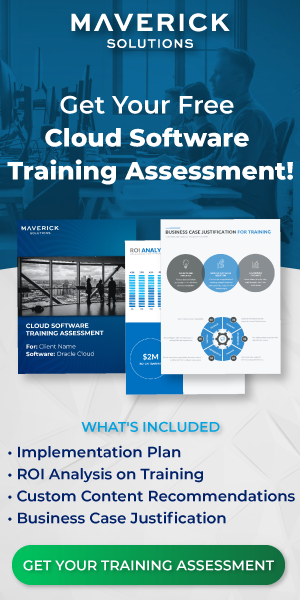Budgetary Control Overview
The Budgetary Control feature in Oracle Enterprise Resource Planning (ERP) Cloud Project Financial Management (PFM) is a set of options and validation processes that validate budgets against consumption to assist you in preventing overspending.
You can integrate Budgetary Control with other Cloud applications, including Grants, Financials, Projects, Procurement, Receiving, and Planning and Budgeting.
Budgetary Control in Oracle ERP Cloud is also closely associated with Encumbrance Accounting. The purpose of Encumbrance Accounting is to avoid spending over your budgeted amount.
You can use Budgetary Control to manage the spending control process on any of your business’s transactions in real-time. The following functions are benefits of using Budgetary Control:
- Upon a transaction’s submission or approval, it performs funds check and funds reservation in order to determine if spending is allowed.
- It maintains budgetary control balances, based on the budget calendar and control budget structure for budget, consumptions, and funds available functions.
- It allows you to monitor your company’s expenditures on a monthly or yearly basis.
- It allows you to define conditions (such as insufficient funds) to stop or override transactions if they exceed a budgeted limit.
So, how do you enable budgetary control in Oracle ERP Cloud? Read on to learn how.
How to enable Budgetary Control in Oracle ERP Cloud
You can choose to enable Budgetary Control for the following:
- Ledgers
- Business units (BU) assigned to a ledger
- Projects
- Transaction types, such as purchase orders (PO) or requisitions
- Journal sources and categories
When enabling Budgetary Control in Oracle ERP Cloud, you will need to consider the following options, which all critically impact how Oracle Cloud Budgetary Control handles transactions:
- Control Budget Filter: Indicates if the Budgetary Control engine will process transactions based on a project, ledger, or both.
- Budgetary Control validation failures options: Indicate whether budget dates pass or fail Budgetary Control validation, based on if the dates are within the control budget period date range. The default setting does allow transactions that have budget dates outside of the control budget period to pass validation, although you can change this configuration to fail the transactions.
- Default Date Rule: Indicates the budget date for Budgetary Control liquidation. You have the following options to choose from:
- System date: Liquidates any reserved funds using the current date.
- Current transaction budget date: Liquidates any reserved funds based on the current transaction’s date
- Prior related transaction budget date: Liquidates any reserved funds based on the date of a previous transaction.
Enabling Budgetary Control for Ledgers or Business Units Assigned to a Ledger
If you plan to use Oracle Cloud Budgetary Control or Oracle Cloud Encumbrance Accounting at any point in the future, it is usually best to turn it on for your ledger or business unit during your initial implementation, even if you are not planning to use it right away.
You can configure the control budget to the track control level, which allows you to change the control level at a later time.
If you enter transactions, such as requisitions, purchase orders, or invoices, without Budgetary Control or Encumbrance Accounting, you will not be able to apply it retroactively.

You have the following options when enabling your ledger for budgetary control:
- If you are implementing Project Portfolio Management (PPM) but only need Budgetary Control to affect transaction accounts, you can choose to enable budgetary control for your Ledger only.
- If you are implementing PPM, you can choose to define Budgetary Control by Project attributes by selecting the Project option.
- If you want Budgetary Control to affect both projects and non-projects, you can choose to enable budgetary control for your ledger and project attributes by selecting the Ledger and Project option.
If you wish to change your Budgetary Control configurations for a ledger, use the Manage Budgetary Controls task in the Setup and Maintenance work area. Once you have selected your ledger, the Enable Budgetary Control for the Ledger and All Journal Sources checkbox should be selected automatically.
This feature activates the Control Budget Filter, allowing you to choose if you want ledger, project, or both to be processed in Budgetary Control.
If you wish to change your configurations, you can add a new row under the Budgetary Control Exceptions pane. This allows you to select a new journal source and journal categories.
Enabling Budgetary Control for Projects and Financial Plan Types
Project managers can enable a project budget’s budgetary control to manage project budget spending at the project level or at each category level. From the Setup and Maintenance work area, you can select your project, and then select the Enable Budgetary Control checkbox.
You can use the Manage Financial Plan Types task in Setup and Maintenance work area to configure Budgetary Controls for a Financial Plan Type.
Financial plan types and budget versions have attributes that allow you to establish control budgets in Oracle Budgetary Control. A control budget prohibits you from spending more than the amounts you have budgeted.
When you construct baseline versions of project budget versions that you enable for Budgetary Control, the application automatically constructs a control budget. How you choose to set the financial plan type attributes affects how you establish control budgets within your project.
Note: A project is limited to a single enabled financial plan type for budgetary controls.
You can adjust certain financial plan type components relating to general information and budget options, such as Plan Class, Planning Amounts, and Budgetary Control.
For your financial plan type’s planning amounts, you can choose from Cost, Revenue, or Cost and Revenue.
Note: If you select your financial plan type as revenue only, you will not be able to enable budgetary control.

You are also able to adjust components relating specifically to the financial plan type’s budgetary control settings, such as Control Budget, Control Level, Default Rate Type, and Tolerance Percentage. These components are listed below:
- Control budget: This attribute allows you to choose where in the project hierarchy you can enter Budgetary Control amounts. You can either input these amounts at the project level or the top resource level. The system then uses these amounts to create the budget account segments. There must be at least one financial plan type that allows for budgetary controls before you can create a control budget.
- Control level: This attribute allows you to choose at what level expenditures can impact funds reservation. The following four levels are outlined below:
- Absolute: The system stops a transaction from occurring. It does not record the transaction, process it, or allow any additional funds to be reserved until a budget manager decides how to settle the insufficient funds.
- Advisory: The user who enters a transaction type receives a warning while the system processes the transaction. However, the process will continue, and the transaction will affect the budget. This level of control allows you to reserve funds, even if they are not available in the budget.
- Track: The system processes the transaction, and the transaction affects the budget. This level of control allows you to reserve funds (even if they are not available in the budget) but without the warning that the system sends under the advisory control level.
- None: You use this for transactions you do not want to count towards the budget. The system does not track or record this transaction in the budget.
- Default rate type: This attribute allows you to choose the rate type for the application to use to convert transaction amounts to currency in the control budget, which happens before the funds check.
- Tolerance percentage: This attribute allows you to set the percentage that a transaction can go beyond the amount allowed before a warning is triggered or the funds reservation is restricted.
Difference between Budgetary Control and Encumbrance Accounting
An encumbrance refers to funds that are put in reserve after a requisition has been finalized. The purpose of encumbrance accounting is to avoid spending over your budgeted amount.
You are able to implement Budgetary Control and Encumbrance Accounting individually or collectively. The two differ in the fact that Encumbrance Accounting functions according to the General Ledger and Subledger Accounting. Also, while Encumbrance Accounting draws from the accounting calendar and chart of accounts, Budgetary Control draws from the account structure and budget calendar. These separate features allow users to manage spending at different levels.
For example, you would choose to use Budgetary Control over Encumbrance Accounting if you wanted all transaction amounts to undergo budget validation while the system processes the transaction in real time.
On the other hand, you would select to use Encumbrance Accounting, rather than Budgetary Control, if you wanted to report balances that account for the General Ledger’s requisition and purchase order responsibilities.
If you only require budget vs. actual expenditures reports intermittently, this will not call for implementing either Budgetary Control or Encumbrance Accounting.
If you want to implement Encumbrance Accounting, you will need to allow Encumbrance Accounting and Budgetary Control for your ledger and business units. However, this does not require you to establish the control budgets.
Only implementing Budgetary Control benefits the following users:
- Users who need real-time spending management capabilities
- Users who report to internal audiences rather than those outside of their organization
- Users who report on available fund balances, budgets, commitments, expenditures and obligations
- Users in Education and/or Nonprofit industries
Considerations for Implementing Budgetary Control
If you are thinking about implementing Budgetary Control, it may help to consider the following questions:
- How tightly should your funds be controlled? This helps you figure out which of the four levels of control you should set.
- Which funds are accessible and okay to use?
- Which level of detail needs to occur for budget vs. consumption reporting?
Still have more questions? You can access detailed walkthroughs of Oracle ERP Cloud and more with ENGAGE Learn. ENGAGE Learn is Maverick Solutions’ subscription-based training content on all Oracle Cloud applications. It is fully customizable, comprehensive, and available 24/7/365. If you want to know how Maverick Solutions can fit into your organization’s current or future Oracle projects, speak with one of our training experts today!
The article was written for Oracle release 21C. Due to the nature of Cloud software and updates, this article may no longer be accurate. If you would like access to the most up-to-date version, please reach out to our team to learn more.



